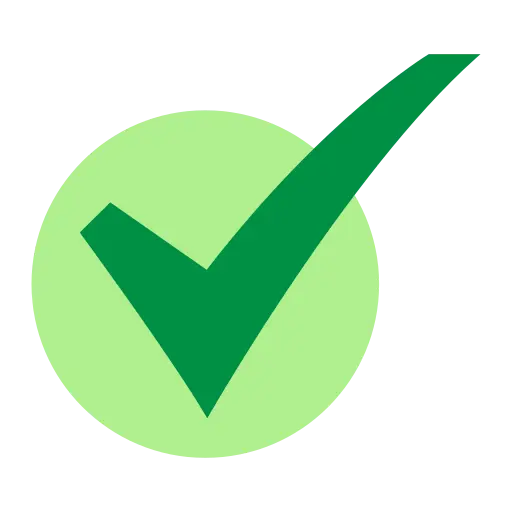📄 Chronological Resume: A Classic Format That Showcases Career Growth
Trust Score: 4.8
351 reviews

Introduction: What is a Chronological Resume and Why It Works
A chronological resume is one of the most widely used resume formats, especially for candidates with consistent work experience. It lists your professional history in reverse order—starting from your most recent job and working backward. This format emphasizes career progression, making it ideal for job seekers with a steady employment track record.
Its simplicity, clarity, and compatibility with most applicant tracking systems (ATS) make it the go-to option for professionals across industries.
Who Should Use a Chronological Resume?
The chronological resume is best suited for individuals with a linear career path—those who have progressed steadily through roles within the same or related fields.
✅ Ideal for:
 Professionals with 3+ years of experience
Professionals with 3+ years of experience Candidates with a stable work history
Candidates with a stable work history Job seekers applying for roles in the same industry
Job seekers applying for roles in the same industry
🚫 Not ideal for:
 Career changers transitioning into a new field
Career changers transitioning into a new field Candidates with employment gaps
Candidates with employment gaps Freelancers or gig workers with diverse project-based work
Freelancers or gig workers with diverse project-based work
If you're in any of the "not ideal" categories, consider using a functional resume (skills-focused) or combination resume (mix of skills and experience).
How to Structure a Chronological Resume
A good chronological resume follows a clear and logical layout that helps hiring managers scan it quickly. Here’s how to structure it:
🔸 Header
Include your name, contact number, professional email, and LinkedIn profile.
🔸 Professional Summary or Objective
Write a 2–3 sentence snapshot highlighting your years of experience, core competencies, and career goals.
🔸 Work Experience (Most Recent First)
List each job with:
 Job Title
Job Title Company Name and Location
Company Name and Location Dates of Employment
Dates of Employment Bullet points detailing accomplishments and responsibilities
Bullet points detailing accomplishments and responsibilities
Use strong action verbs and quantifiable results:
“Led a team of 8 to implement a new CRM system, reducing response time by 35%.”
🔸 Education
List your highest degree first. Include school name, degree type, major, and graduation year.
🔸 Skills
Include 6–10 relevant skills: technical (e.g., Excel, Python) and soft (e.g., communication, leadership).
Pros and Cons of the Chronological Resume
Every resume format serves a different purpose. While the chronological resume is the most commonly used structure, it may not suit every career path or situation. Let’s explore the advantages and disadvantages in depth so you can decide if this format is right for you.
✅ Pros of a Chronological Resume
- Clearly Showcases Career Growth
 This format makes it easy to track your professional development over time. Promotions, increasing responsibilities, and long tenures at companies are visually obvious to the reader.
This format makes it easy to track your professional development over time. Promotions, increasing responsibilities, and long tenures at companies are visually obvious to the reader. For example, if you started as a Marketing Associate and moved up to Senior Marketing Manager in five years, that progression becomes a powerful narrative.
For example, if you started as a Marketing Associate and moved up to Senior Marketing Manager in five years, that progression becomes a powerful narrative.
- Familiar to Recruiters and Hiring Managers
 Recruiters expect this format, especially in traditional industries (finance, healthcare, education, law, etc.). It aligns with their mental framework when reviewing resumes.
Recruiters expect this format, especially in traditional industries (finance, healthcare, education, law, etc.). It aligns with their mental framework when reviewing resumes. Hiring professionals don’t need to “decode” your background—they can skim dates, job titles, and companies quickly.
Hiring professionals don’t need to “decode” your background—they can skim dates, job titles, and companies quickly.
- ATS-Friendly Format
 Most companies use Applicant Tracking Systems (ATS) to scan resumes before a human sees them. A chronological resume, when formatted cleanly (no tables or images), is easily parsed by these systems.
Most companies use Applicant Tracking Systems (ATS) to scan resumes before a human sees them. A chronological resume, when formatted cleanly (no tables or images), is easily parsed by these systems. This improves your chances of your resume being read by a recruiter in the first place.
This improves your chances of your resume being read by a recruiter in the first place.
- Ideal for Traditional, Stable Career Paths
 If you’ve worked steadily in one industry or functional area, the chronological resume reinforces your reliability, loyalty, and growth.
If you’ve worked steadily in one industry or functional area, the chronological resume reinforces your reliability, loyalty, and growth. It creates a compelling timeline that communicates: “I know this field, and here’s the experience to prove it.”
It creates a compelling timeline that communicates: “I know this field, and here’s the experience to prove it.”
- Easy to Compare Candidates
 Employers often compare multiple applicants. A chronological resume standardizes information (job, employer, dates, duties) in a predictable order, making comparisons between candidates faster and easier.
Employers often compare multiple applicants. A chronological resume standardizes information (job, employer, dates, duties) in a predictable order, making comparisons between candidates faster and easier.
❌ Cons of a Chronological Resume
- Highlights Employment Gaps or Job-Hopping
 Gaps between jobs (even if they’re explainable) become instantly visible in this format. A six-month unemployment period between roles, or frequent job switches, may raise red flags for recruiters.
Gaps between jobs (even if they’re explainable) become instantly visible in this format. A six-month unemployment period between roles, or frequent job switches, may raise red flags for recruiters. Employers might assume instability or performance issues, even if the reality is different (e.g., caregiving, health issues, layoffs, relocation, career break).
Employers might assume instability or performance issues, even if the reality is different (e.g., caregiving, health issues, layoffs, relocation, career break).
- Less Effective for Career Changers
 If you’re switching industries or roles, this format puts the most emphasis on past job titles and responsibilities, which might not align with your target role.
If you’re switching industries or roles, this format puts the most emphasis on past job titles and responsibilities, which might not align with your target role. For example, if you’re moving from teaching to marketing, your teaching experience—though valuable—may not directly support your new career focus unless reframed.
For example, if you’re moving from teaching to marketing, your teaching experience—though valuable—may not directly support your new career focus unless reframed.
- Underrepresents Transferable Skills
 Because this format focuses on where you worked and what you did, your core strengths and abilities may get buried within job descriptions.
Because this format focuses on where you worked and what you did, your core strengths and abilities may get buried within job descriptions. A hiring manager may overlook the fact that you’re an excellent communicator or strategist if your job title doesn’t reflect those skills.
A hiring manager may overlook the fact that you’re an excellent communicator or strategist if your job title doesn’t reflect those skills.
- Job Titles May Not Reflect Your True Role
 In many companies, job titles are inconsistent. You may have been doing the work of a manager while holding the title of “Coordinator.”
In many companies, job titles are inconsistent. You may have been doing the work of a manager while holding the title of “Coordinator.” In a chronological resume, titles carry a lot of weight. If they don’t match your actual contributions, your resume could undervalue your impact.
In a chronological resume, titles carry a lot of weight. If they don’t match your actual contributions, your resume could undervalue your impact.
- Not Ideal for Freelancers or Gig Workers
 If you’ve worked on short-term contracts or multiple projects at once, this format can look scattered or unstable. Listing too many roles can overwhelm the reader and dilute your achievements.
If you’ve worked on short-term contracts or multiple projects at once, this format can look scattered or unstable. Listing too many roles can overwhelm the reader and dilute your achievements.
- Requires Careful Customization
 Since it emphasizes experience, you’ll need to customize bullet points for each job to match the job you’re applying for. If not tailored, it may read as generic or unfocused.
Since it emphasizes experience, you’ll need to customize bullet points for each job to match the job you’re applying for. If not tailored, it may read as generic or unfocused.
✅ When to Use the Chronological Resume:
 You have 3+ years of consistent work experience
You have 3+ years of consistent work experience You're applying for jobs in the same industry or role
You're applying for jobs in the same industry or role You have few or no employment gaps
You have few or no employment gaps You want to highlight promotions, achievements, or a clear upward path
You want to highlight promotions, achievements, or a clear upward path
❌ When to Avoid or Modify It:
 You’re switching careers
You’re switching careers You have gaps or short stints in jobs
You have gaps or short stints in jobs You’re a student, recent graduate, or freelancer
You’re a student, recent graduate, or freelancer You need to emphasize skills over experience
You need to emphasize skills over experience
FAQs: Chronological Resume
Q1. Is a chronological resume good for freshers?
Not typically. Freshers should opt for a skills-based or hybrid resume that highlights education, internships, and coursework over job history.
Q2. What is the difference between a chronological and reverse chronological resume?
They’re essentially the same. “Reverse chronological” is just a clearer term to describe the order—latest job at the top.
Q3. Can I include internships or freelance work in a chronological resume?
Yes, absolutely! If relevant, list internships and freelance projects under “Work Experience,” following the same reverse order.






